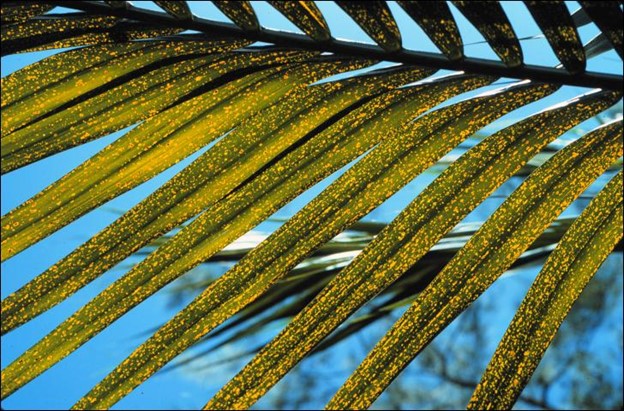
by Matt Lollar | May 13, 2021
Palm trees are great for adding a tropical feel to your landscape. For the most part, they are easy to care for, however there are a number of environmental and nutritional factors that can affect palm tree growth. Extended drought conditions can cause palm trunk to contract or shrivel and extended periods of moisture can cause trunks to swell and crack.
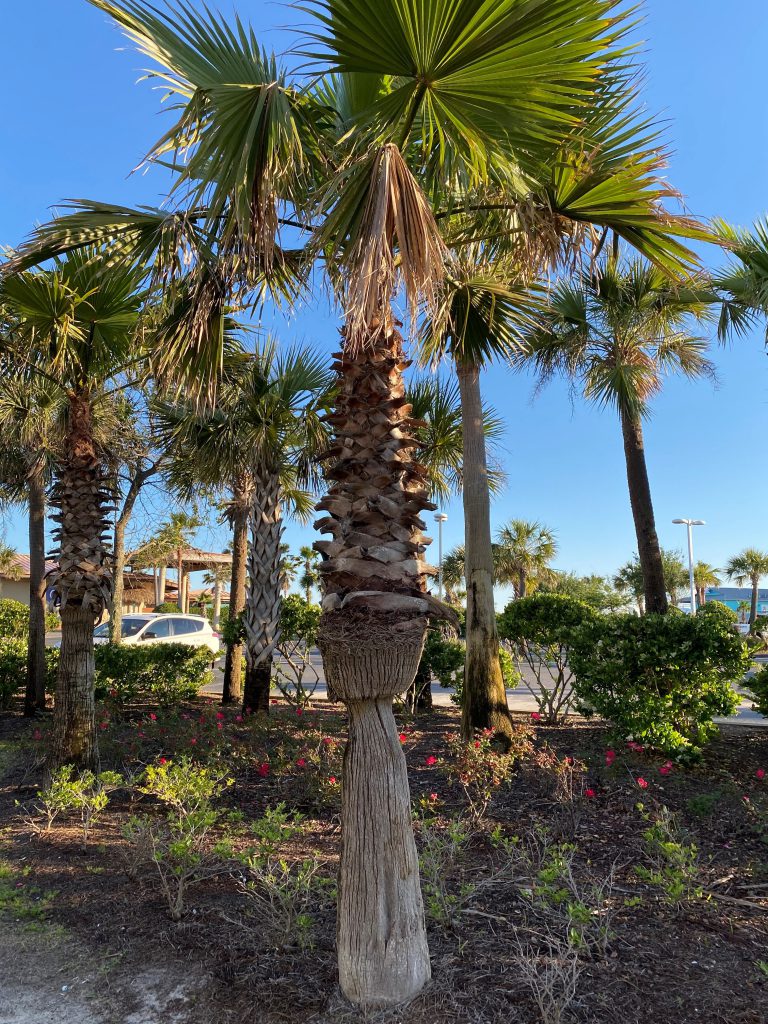
A palm tree with an irregularly shaped trunk due to water stress. Photo Credit: Matt Lollar, University of Florida/IFAS Extension – Santa Rosa County
Palm trees are monocots and do not have lateral meristems or vascular cambium. In dicot and coniferous trees these structures produce additional xylem (water transport structures) internally and phloem (nutrient transport structures) and bark externally. This means that once the apical meristem (frond producing portion of the palm) dies, the tree dies. It also means that wounds to the trunks of palms are visible for life instead of healing over like in dicots. If you were to cut the top out of a red maple, a number of it’s branches would fight to take over as the main trunk. If you were to cut the top out of a palm tree , you would be left with a dead snag for a tree. Palms certainly have unique structures and growing habits. Visit this publication from Dr. Timothy Broschat for more information on palm tree anatomy and morphology.
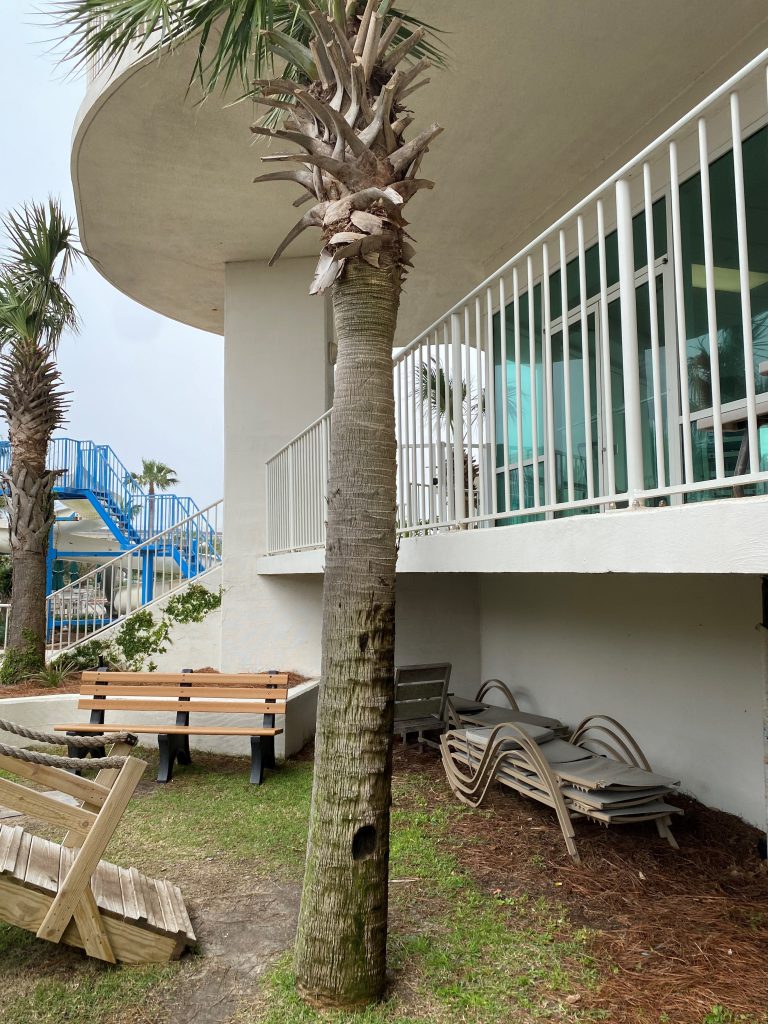
A palm tree with a wound near the base of its trunk. Photo Credit: Matt Lollar, University of Florida/IFAS Extension – Santa Rosa County
Palm trees display nutritional disorders differently from other trees. Their nutritional balance gets disrupted if too much nitrogen is applied. This often happens when high nitrogen turfgrass fertilizers are applied near palm plantings. The recommended palm fertilizer is 8-2-12 (nitrogen-phosphorus-potassium) plus 4 magnesium all available in 100% slow release form. A soil test is recommended to determine if other micronutrients are needed in addition to magnesium.

Potassium-deficient older leaf of Dictyosperma album (hurricane palm) showing translucent yellow-orange spotting. Photo Credit: Timothy K. Broschat, University of Florida/IFAS
Potassium is one of the most common nutrient deficiencies observed in palm trees. For more detailed information on palm tree nutrient deficiencies please visit the publication: Nutrient Deficiencies of Landscape and Field-Grown Palms in Florida.
This article provides just a glimpse of some of the common issues that affect palms. For more information on what could be going on with your palm trees and general palm tree care please visit Ask IFAS: Palm Care.
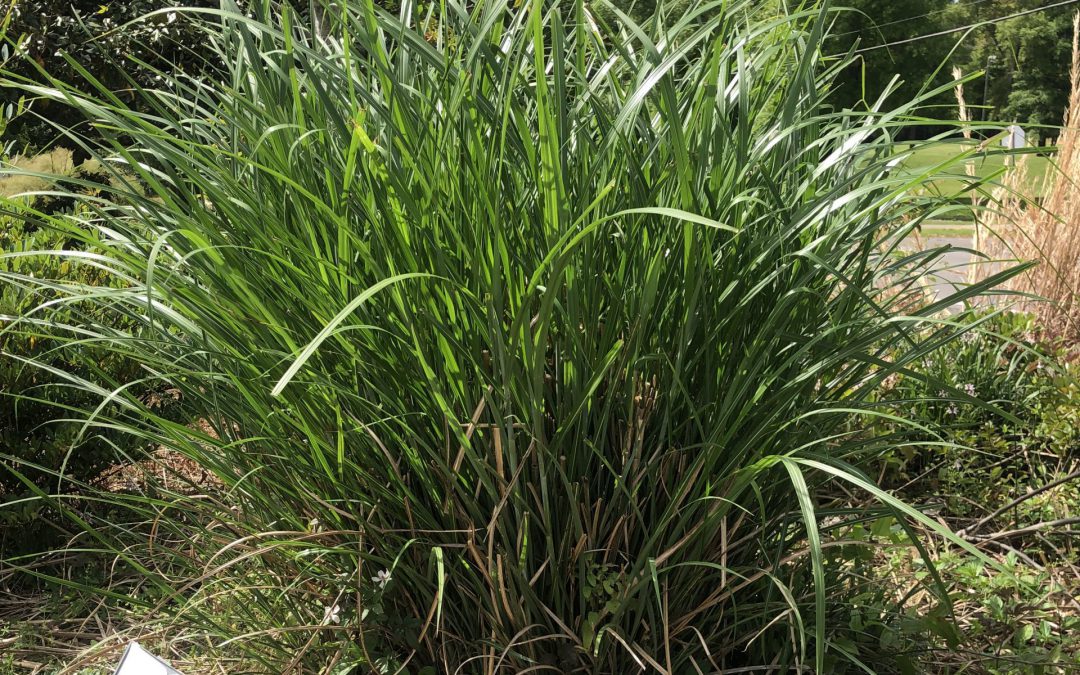
by Mark Tancig | Apr 8, 2021
Ornamental grasses are a great addition to the landscape. Most are usually easy to establish, need little water and fertilization, provide different textures, and are generally low maintenance. The one main maintenance activity that is necessary for most of our north Florida ornamental grasses is a good “haircut” in the spring.

Ornamental grasses for north Florida, such as muhly grass, purple fountain grass, and Miscanthus (l to r), add texture, color, and winter interest to a landscape. Credit: UF/IFAS.
Pruning grasses removes the spent flowers and seed heads, as well as all of the brown leaves, which provided the fall and winter interest that ornamental grasses bring to the landscape. These leaves also serve as a sort of natural wind-chime during the cold, windy days of our winters and may even provide cover and nesting material for wildlife. However, now it’s spring, and lush green growth is waiting to pop through that dead mix of leaves and stems. Pruning clears all that out, allowing for good air movement and a rejuvenation of the plant that can help minimize pests and disease.
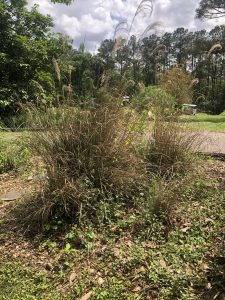
Miscanthus grass before a spring “haircut”. Credit: Mark Tancig, UF/IFAS.
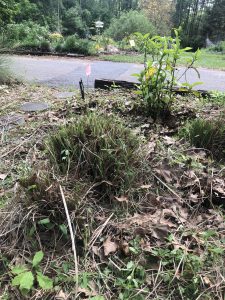
Miscanthus grass after a spring “haircut”. Credit: Mark Tancig, UF/IFAS.
To prune ornamental grasses, wait for after the last average frost date and grab some nice sharp shears. Next, just shear the clump about six inches above the soil line working from the outside towards the center with a slight angle, creating a sort of fade effect. For larger specimens you may need to adjust the cut a bit higher and may even want to use a hedge trimmer. Nice clean cuts are preferred.
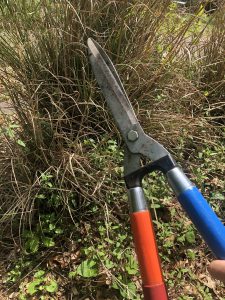
Shears are the way to go when pruning ornamental grasses. Orange and blue handles optional! Credit: Mark Tancig, UF/IFAS
One good pointer I saw online is to also bring along an old belt or a piece of rope to cinch up the dead material before pruning to easily collect the debris. I tend to use a cut and swipe motion that pushes the large material to one side of the plant, and I follow up with a metal garden rake to pull out more of the old, coarser material.
Within no time, new growth will flush out from the mound and often surprise you with how quick it can grow. This proves just how dynamic ornamental grasses can be in the landscape, showcasing lush green growth during one season and providing stark, whimsical interest during another.
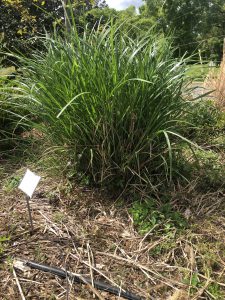
Miscanthus grass two weeks following pruning. Credit: Mark Tancig, UF/IFAS.
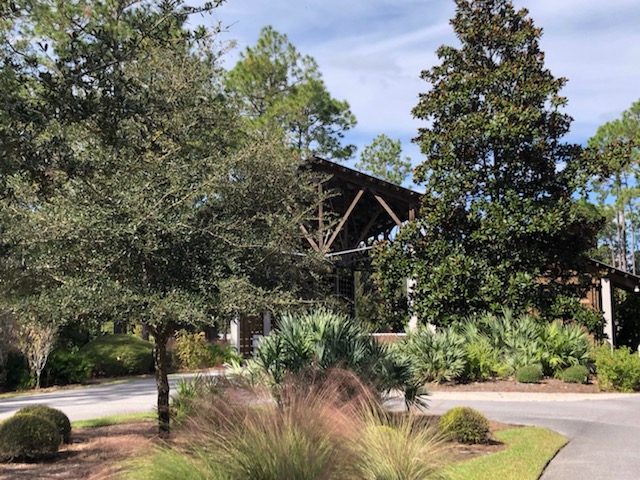
by Stephen Greer | Mar 11, 2021
Landscaping with native plants brings opportunities and challenges while adding diversity and beauty to the home. There are many factors that come into play to successfully grow plants. As gardeners, we all want things to look exceptional for all to enjoy. Native plants have evolved over long periods of time naturally in a given region without intervention, bringing much needed diversity to natural areas and landscapes. A big plus for natives are the flowers presented for the local bee populations and other pollinators assisting in the continuation of the plant species potentially established over thousands of years.
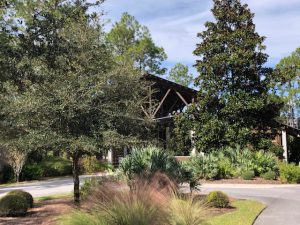
Landscape of Native Plants. Photo Credit: Stephen Greer, UF IFAS Extension Santa Rosa County
Native plants have evolved in natural communities and are found to be interdependent not only plant to plant yet with soil type, soil microbial activity through bacteria and fungus, specific site location and others though biodiversity of these living communities. Part of this community is often referred to as the soil web creating the connections of billions upon billions of organisms in the critical survival of the plants, insects and other animals we see. The first steps when considering native plants for your landscape are to do your research and contact your local Extension office. Some questions to consider may include: Does it grow best in well drained sand or wet soils or require high in organic matter? Will full sun, part-shade to full shade be needed?
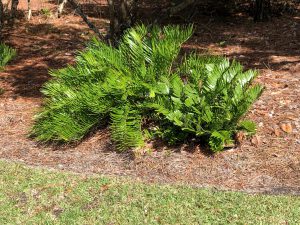
Coontie Palm in Landscape. Photo Credit: Stephen Greer, UF IFAS Extension Santa Rosa
Plants that are native and non-native are often seen in the same landscape setting. Consideration should be taken to determine if either of the groups are aggressive in expanding beyond the intended plant setting. Before moving on, non-native is in reference to plants that are introduced to a plant community that came from a totally different plant location. An example of that location being hollies from southeast Asia or South America or even a different area of the United States. Many have been researched and observed for many years under managed situations before being introduced into the local landscape nursery markets. Once in a while a plant is introduced that has not gone through a long rigorous study and can become naturalized outside of its normal plant zones and establish as an invasive species. This highly adaptable aggressive habit can, and often will colonize a given location out competing the native plants. Kudzu is a good example of an invasive exotic plant that is naturalized in the southeastern U.S.
As gardeners there are opportunities to have positive impacts on some of these diminished native habitat areas that can be threatened by growth of urban and rural areas in Florida. Establishing native plants areas into the landscape with proper soil preparation, managed water needs and more gives that chance for this interdependent system of plants, animals and nonliving elements to remain established with big impacts.
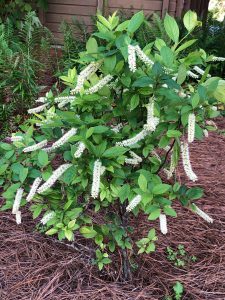
Virginia Sweetspire. Photo Credit: Stephen Greer, UF IFAS Extension Santa Rosa County
Native plants can be a working part of the garden from wonderful flowers, season color change, leaf foliage of multiple sizes and shapes to feed the insects that feed the birds, leaves and nuts that feed so many other animals for us to enjoy seeing. Balance is such a big part of being a successful gardener. Remember not all native plants are suitable for landscape spaces, do your research and ask for assistance from the experts to determine if it is the right plant for the right place.
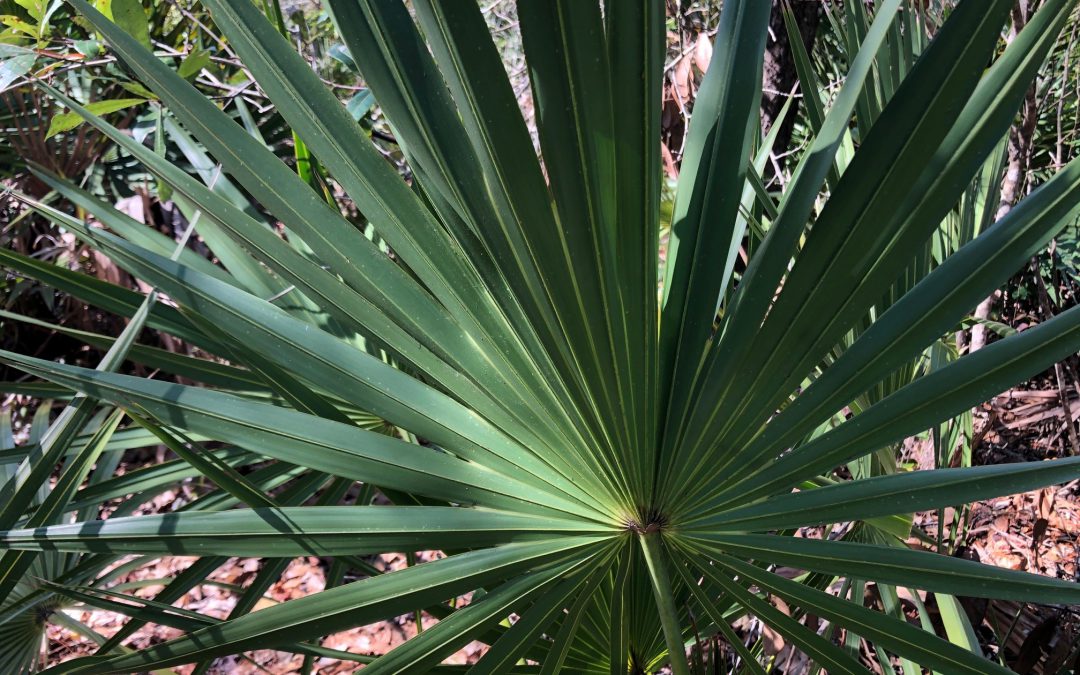
by Carrie Stevenson | Mar 4, 2021
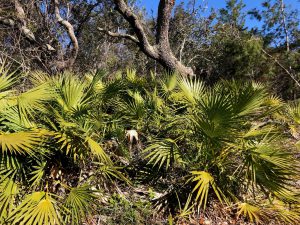
Saw palmettos provide crucial ecosystem services for the forests of Florida. Photo credit: Carrie Stevenson, UF IFAS Extension
The saw palmetto (Serenoa repens) is a classic symbol of Florida. Found in upland habitats and just to the edge of wetlands, their brilliant green fronds stand out in the mostly brown pine flatwoods and oak hammocks to which they are endemic. The shrublike saw palmetto thrives in sandy soils, is highly salt tolerant, and is tough as nails. The plant’s root is one of the sturdiest in nature. Imagine the trunk of a palm tree laid horizontally and just underground—this is the plant’s base. This root system lends stability and tolerance to nearly every tough Florida growing condition, including drought, floods, and fire. Saw palmettos are extremely slow growing, and there are stands in south Florida in which botanists have found individual plants and clonal colonies several thousand years old. Saw palmettos are one of the few members of the palm family that thrive in the panhandle. While many palm trees are planted here, most are native to more southern climates with warmer winters and karst geology—a higher pH soil composed of limestone and often prone to springs and sinkholes.

The tough, serrated edges of the saw palmetto gave it its name. Photo credit: Carrie Stevenson, UF IFAS Extension
The saw palmetto’s name comes from the serrated, saw-like edges of the stem. These are quite tough and can cut your skin and clothing if not careful. A very similar palmetto, the bluestem, grows in wetter soils. It can be differentiated from the saw palmetto because its stems are smooth—no serrated edges—and the whole plant has a bluish cast to it.
The saw palmetto has long been prized by humans for its practical uses. The “ethnobotanical” history of this plant has ties to Native American tribes who used the fronds for roofing and building material, brooms, fishing nets, and fans. The leaves were utilized for rope, and multiple plant parts for food and medicine. The dark blue/black fruit of the saw palmetto was considered an aphrodisiac and has been used to treat prostate problems for centuries. According to a UF publication on the saw palmetto, “Modern day development of a purified extract from the berries greatly improves symptoms of enlarged prostate. Florida is the biggest source and producer of saw palmetto products. With about 2,000 tons harvested from South Florida and exported to Europe each year, the fruit crop estimate is $50 million a year in the state.”
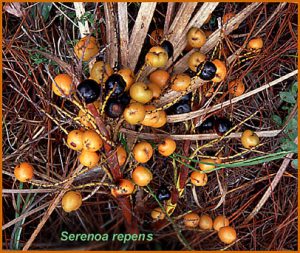
Saw palmetto berries are a staple of Florida wildlife diets. Photo credit: UF School of Forest Resources & Conservation
Besides the human uses, saw palmetto serves as a crucial component in the diet of native wildlife. Florida black bears, panthers, 20 other species of mammals, over 100 types of birds, 25 amphibians, over 60 reptiles, and countless insects depend on saw palmetto berries as part of their diet. The wild harvest of saw palmettos is regulated by the state to prevent overharvesting and negative impacts to the wildlife food supply.
Saw palmettos also make a great home landscape plant, as they can grow in a wide variety of conditions, provide wildlife food and habitat, and add visual interest. There are few plants more “low-maintenance” than an established saw palmetto. A mature one is so difficult to remove, that it’s best to leave it where it is anyway!
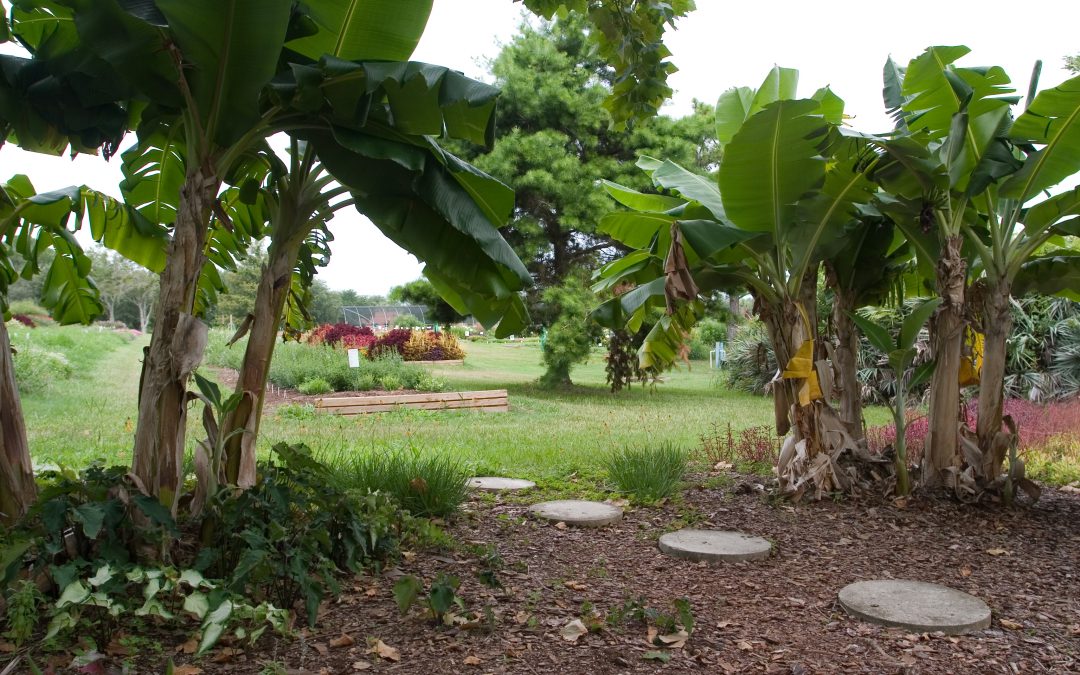
by Ray Bodrey | Feb 25, 2021
Bananas are a great choice for your landscape, whether as an edible fruit producer or simply as an ornamental, giving your space a tropical vibe.
Bananas are native to southeast Asia, however, grow well across Florida. Complementary plants that can be paired with bananas in the landscape are bird of paradise (banana relative), canna lily, cone ginger, philodendron, coontie, and palmetto palm, just to name some.
Bananas are very easy to manage during the warmer months. Bananas are water loving, and that’s putting it lightly. Planting in vicinity of an eave on your home is a good measure for site suitability. Roof rainwater will drastically increase the growth of the banana tree and decrease the need for supplemental irrigation. Banana trees will need full sun and high organic moist soils create the best environment. For nutrition, a seasonal one-pound application of 6-2-12 fertilizer is a good practice to sustain older trees. Young trees should be fertilized every two months for the first year at a rate of a half-pound.
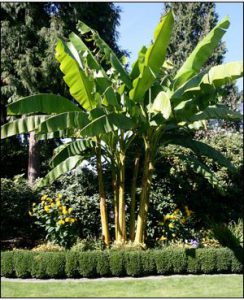
Musa basjoo is one of the most cold hardy banana varieties. Photo Credit: University of Florida/IFAS Extension
If there is a con to banana trees, it’s their cold hardiness. Some varieties fair well and others some not so much. ‘Dwarf Cavendish’ (Musa acuminate) is a popular variety that is found in many garden centers in the state. It produces fruit very well, but it is not very cold hardy. ‘Pink Velvet’ (Musa velutina) produces fruit with a bright pink peel, but isn’t very cold hardy either. A couple of cold hardy ornamental varieties are the ‘Japanese Fiber’ (Musa basjoo) and ‘Black Thai’ (Musa balbisiana), which is by far the most cold hardy, with the ability to easily combat below freezing temperatures.
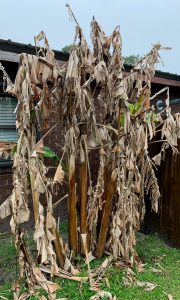
Freeze damage on a banana tree. Photo Credit: Ray Bodrey, University of Florida Extension – Gulf County
Regardless of cold hardiness, in many cases, banana trees will turn brown after freezing temperatures occur or even if the temperatures reach just above the freezing mark, but will bounce back in the spring. Until then, it’s important not to prune away the brown leaves or trunk skin. These leaves act as an insulator and help defend against freezing temperatures. Usually, the last freezing temperatures that may occur in the Panhandle are around the first of April. So, to be safe, pruning can begin by mid to late April. When pruning, be sure to be equipped with a sharp knife, gloves and work clothes. Banana trunk skin and leaves can be quite fibrous and the liquid from the tree can stain clothing and hands.
So, what’s the best variety of fruiting bananas? Most ornamental bananas do not produce tasty fruit. If you are looking for a production banana, ‘Lady Finger’, ‘Apple’, and ‘Ice Cream’ are popular varieties, but are better suited for the central and southern parts of the state.
For more information, contact your local county extension office.
Supporting information for this article can be found on the UF/IFAS Gardening Solutions website.
Also, for more information see the UF/IFAS EDIS publication, “Banana Growing in the Florida Home Landscape”, by Jonathan H. Crane and Carlos F. Balerdi.
UF/IFAS Extension is an Equal Opportunity Institution.





















